9 Nights / 10 Days

On arrival at Paro Airport and after completing your Visa / Permit formalities you will be received by our Bhutan representative who will assist you in boarding your vehicle for transfer to Thimphu (2320Mts / 7656Fts, 65 Kms / 01½ to 02 Hrs), Thimphu is the capital town of Bhutan and the centre of government, religion and commerce, Thimphu is a unique city with unusual mixture of modern development alongside ancient traditions. Although not what one expects from a capital city, Thimphu is still a fitting and lively place. Home to civil servants, expatriates and monk body, Thimphu maintains a strong national character in its architectural style. On arrival in Thimphu, Check in to the hotel. Evening free at leisure. Overnight at Hotel.
After breakfasts go for Thimphu sightseeing covering – Memorial Chorten - The Chorten was built in 1974 to honor the 3rd King of Bhutan, Jigme Dorji Wangchuck (1928–1972), is a prominent landmark in the city with its Golden Spires and Bells. In 2008, it underwent extensive renovation. It is popularly known as "the most visible religious landmark in Bhutan". Kuensel Phodrang (Buddha Point) - You can pay your obeisance and offer prayers to the Buddha, the Largest Statue in the country and then walk around and take a glimpse of the valley, Changangkha Lhakhang (Monastery) (All tourists visiting Dzongs and temples must be dressed appropriately. No half pant, sleeve less shirts, floaters, etc are allowed) - This popular fortress-like temple perched on a ridge above central Thimphu regularly hums with pilgrim activity. It was established in the 12th century on a site chosen by Lama Phajo Drukgom Shigpo, who came from Ralung in Tibet.
After breakfast drive to Punakha (1200Mts / 3936Fts, 77 Kms / 03 to 3½ Hrs) / Wangdi (Wangdiphodrang) (1350Mts / 4430Fts, 70 Kms / 03 to 3½ Hrs). Punakha / Wangdi is the last town on the highway before entering Central Bhutan. The drive is overDochu La pass (3080Mts / 10102Fts) which is very scenic with fascinating view of mountains of Bhutan. Stopping briefly here to take in the view and admire the Chorten, Mani wall, and Prayer flags which decorate the highest point on the road. If skies are clear, the following peaks can be seen from this Pass (Left to Right): Mt. Masagang (7,158Mts / 23478Fts), Mt. Tsendagang (6,960Mts / 22829Fts), Mt. Terigang (7,060Mts / 23157Fts), Mt. Jejegangphugang (7,158Mts / 23478Fts), Mt. Kangphugang (7,170Mts / 23518Fts), Mt. Zongphugang (7,060Mts / 23157Fts), a table mountain that dominates the isolated region of Lunana - Finally Mt.Gangkar Puensum (7,497Mts / 24590Fts), the highest peak in Bhutan. Visit Punakha Dzong (Which is closed in Winter months when the monk body are in Punakha. All visits to Punakha Dzong & Monastery are limited till Courtyard only. All tourists visiting Dzongs and temples must be dressed appropriately. No half pant, sleeve less shirts, floaters, etc are allowed) - Built Strategically at the junction of Pho Chhu (Father) and Mo Chhu (Mother) rivers in 1637, by Shabdrung Ngawang Namgyal to serve as the religious and administrative centre of the region, Punakha Dzong has played an important role in Bhutan's history. Damaged by Four catastrophic fires and an earthquake, the Dzong has been fully restored by the present King. The Dzong is open for visitors during Punakha Festival and in summer months when the monk body moves to Thimphu. Chimi Lhakhang (All tourists visiting Dzongs and temples must be dressed appropriately. No half pant, sleeve less shirts, floaters, etc are allowed) - situated on a hillock in the centre of the valley, is dedicated to Lama Drukpa Kuenley, who in the late 15th century used humor, songs and outrageous behavior to dramatize his teachings and due to this also known as "Divine Madman". This temple is also known as the temple of fertility. It is widely believed that couples who do not have children and wanting one, if they pray at this temple, they are usually blessed with a child very soon. It is about 30 minute walk across field from the road to the temple. The trail leads across rice fields to the tiny settlement of Pana, meaning "field". It then follows a tiny stream downhill to Yoaka and across more fields before making a short climb to Chimi Lhakhang. Overnight at the Hotel in Wangdi.
Today the day start early for excursion to Gangtey & Phobjikha Valley (3000Mts / 9845fts , 135Kms / 5 to 5½ Hrs One way ) The valley of Gangtey is one of the most beautiful spots in Bhutan. The surprise of finding such a wide, flat valley without any trees after the hard climb through dense forests is augmented by an impression of vast space, and extremely rare experience in Bhutan where most of the valley’s are tightly enclosed. A few kilometers beyond the Gangtey Monastery, on the valley floor lie’s the village of Phobjikha. This place is the winter home of black necked cranes that migrate from the arid plains in the north to pass winter in milder and lower climate. Phobjikha, at an altitude of 2900 m, falls under the district of Wangdiphodrang and lies on the periphery of the Black Mountain National Park.
After breakfast, transfer to Wangdi (1350Mts / 4430Fts, 185 Kms / 05 Hrs). Overnight stay at Hotel in Wangdi.
After breakfast visit Punakha Dzong (Which is closed in Winter months when the monk body are in Punakha. All visits to Punakha Dzong & Monastery are limited till Courtyard only. All tourists visiting Dzongs and temples must be dressed appropriately. No half pant, sleeve less shirts, floaters, etc are allowed) - Built Strategically at the junction of Pho Chhu (Father) and Mo Chhu (Mother) rivers in 1637, by Shabdrung Ngawang Namgyal to serve as the religious and administrative centre of the region, Punakha Dzong has played an important role in Bhutan's history. Damaged by Four catastrophic fires and an earthquake, the Dzong has been fully restored by the present King. The Dzong is open for visitors during Punakha Festival and in summer months when the monk body moves to Thimphu. Chimi Lhakhang (All tourists visiting Dzongs and temples must be dressed appropriately. No half pant, sleeve less shirts, floaters, etc are allowed) - situated on a hillock in the centre of the valley, is dedicated to Lama Drukpa Kuenley, who in the late 15th century used humor, songs and outrageous behavior to dramatize his teachings and due to this also known as "Divine Madman". This temple is also known as the temple of fertility. It is widely believed that couples who do not have children and wanting one, if they pray at this temple, they are usually blessed with a child very soon. It is about 30 minute walk across field from the road to the temple. The trail leads across rice fields to the tiny settlement of Pana, meaning "field". It then follows a tiny stream downhill to Yoaka and across more fields before making a short climb to Chimi Lhakhang. Later transfer to Paro (2134Mts / 7000Fts, 135 Kms / 05 Hrs,). On arrival Paro, check in to the hotel. Afternoon free at leisure or one can also go for leisurely walk in the valley or by the River side. Overnight at Hotel.
After breakfast go for Paro Sightseeing covering Drukgyel Dzong - This Dzong has a delightful village nestling at its foot, was built in 1646 by Shabdrung Ngawang Namgyal to commemorate his victory over the Tibetan invaders. Historically and strategically this Dzong with stood all its glory and was featured in 1914 vide National Geographic magazine. The glory of Drukgyel Dzong remained even when it was destroyed by fire in 1951. On a clear day, one can see the commanding view of Mt Jhomolhari (7134Mts / 23400Fts) can be seen towering over the Dzong. The visit to Drukgyel Dzong ruins involves soft walking hence it is advice able that one goes with walking shoes. Dzong gives an excellent view of the foothills villages and its landscape. Then proceed to visit Ta Dzong (National Museum) (After September 2011 Earth quake, Ta Dzong (Paro Museum) had been closed and shifted to exhibition hall just above the museum. Now the present exhibition hall will be open throughout the week except on Weekends & Government holidays.All tourists visiting Dzongs and temples must be dressed appropriately. No half pant, sleeve less shirts, floaters, etc are allowed). -One time watch tower built to defend Rinpung Dozng during inter-valley wars of the 17th century, since 1967 Ta Dzong is serving as the National Museum of the country. It holds fascinating collection of art, relics, religious Thankha paintings and Bhutan's exquisite postage stamps. The museum circular shape augments its varied collection displayed over several floors. Back to the hotel. Overnight at Hotel.
Start the day early for a full day excursion to Haa via Chele-la pass (3800Mts / 12465Fts, 65 Kms / 02 to 03Hrs – One way) with packed or early breakfast. Drive for 4 Kms away at Bondey village the road to Haa diverts towards the right hand side and ascends towards the Chele-la pass starts. After driving through Blue Pine & Rhododendron Forest for 45 km, reach Chele-la pass (3988Mts / 13081Fts). From this point one can have a superb view of Mt. Jhomolhari (7134Mts / 23400Fts) & Mt. Jichu Drake (6989Mts / 22924Fts). This is a very good place to walk around for few minutes enjoying the view. Drive on to Haa, descending all the way for another 22 km (under an hour’s drive), finally reaching Haa.
Start the day early for a day hike to Taktsang Lhakhang (Tiger's Nest) (All tourists visiting Dzongs and temples must be dressed appropriately. No half pant, sleeve less shirts, floaters, etc are allowed) with packed or early breakfast - The hike which is all the way uphill takes about 2½ hrs to 3Hrs one way through pine forests. The monastery clings to a huge granite cliff 900 meters from the Paro valley. It is one of the most famous of Bhutan's monasteries. It is said that Guru Rinpoche arrived here on the back of a tigress and meditated at this monastery and hence it is called "Tiger's Nest". This site has been recognized as a most sacred place and visited by Shabdrung Ngawang Namgyal in 1646 and now visited by all Bhutanese at least once in their lifetime. On 19 April, 1998, a fire severely damaged the main structure of building but now this Bhutanese jewel has been restored to its original splendor. Guest can also opt for Ponies on direct payment basis but for guest who are unable to make it to the top even reaching to the cafeteria area which in almost half way is very fulfilling. Back to the Paro hotel. Afternoon / Evening free at leisure or one can also go for shopping in the market. Overnight at Hotel
After Breakfast, check out meet your vehicle at hotel parking & proceed to Airport to board your flight back home.
We deal in Tour Operator Services. Read More...

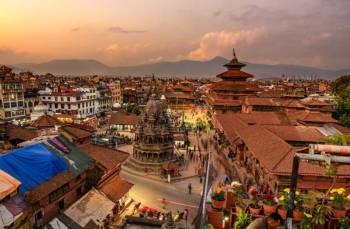 3D/2N
3D/2N
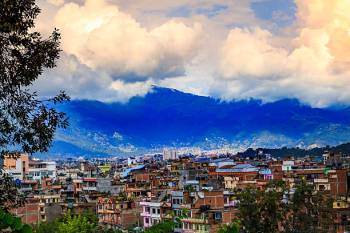 12D/11N
12D/11N
11 Nights - 12 Days Nepal Tour Package
Prayagraj - Varanasi - Ayodhya - Kathmandu - Pokhara - Chitwan - janakpur
 12D/11N
12D/11N
 9D/8N
9D/8N
 5D/4N
5D/4N
 9D/8N
9D/8N
8 Nights - 9 Days Bhutan Budget Trip
Thimphu - Paro - Punakha - Trongsa - Bumthang
 11D/10N
11D/10N
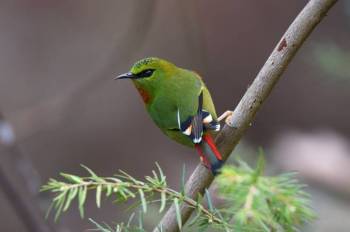 14D/13N
14D/13N
13 Nights - 14 Days Bhutan Bird Tour
Thimphu - Paro - Punakha - Trongsa - Bumthang
 8D/7N
8D/7N
7Night - 8Days Bhutan Tour For Family
Thimphu - Paro - Punakha - Trongsa - Bumthang
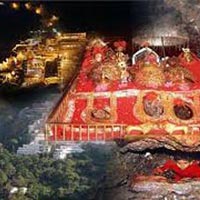 10D/9N
10D/9N
Srinagar - Anantnag - Patnitop - Jammu - Baramulla
 10D/9N
10D/9N
 10D/9N
10D/9N
New Delhi - Varanasi - Bodhgaya - Rajgir - Nalanda - Patna - Vaishali - Kushinagar ..
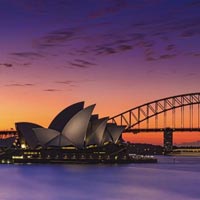 10D/9N
10D/9N
 10D/9N
10D/9N
Kinnaur - Kaza - Spiti Romantic Package
Chandigarh City - Shimla - Kinnaur - Kaza - Digboi
 10D/9N
10D/9N
 10D/9N
10D/9N
South India - Kerala & Tamil nadu- 9 N/1..
Kovalam - Munnar - Alleppey - Madurai - Kochi - Kumarakom Thekkady
 10D/9N
10D/9N
 10D/9N
10D/9N
Tawang Kaziranga Shillong Tour
Guwahati - Shillong - Tawang - Kaziranga - Cherrapunji
 5D/4N
5D/4N
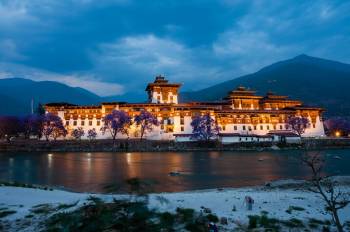 7D/6N
7D/6N
6 Nights/ 7 Days - Bhutan Happiness Tour
Punakha - Bumthang - Paro - Thimphu - Phobjik
 20D/19N
20D/19N
20 Days Land Package Country Tour BHUTAN..
Punakha - Paro - Phuntsholing - Bagdogra - Bumthang - Mongar - Trashigang - Trongsa..
 6D/5N
6D/5N
 4D/3N
4D/3N
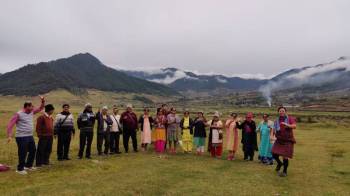 6D/5N
6D/5N
 7D/6N
7D/6N